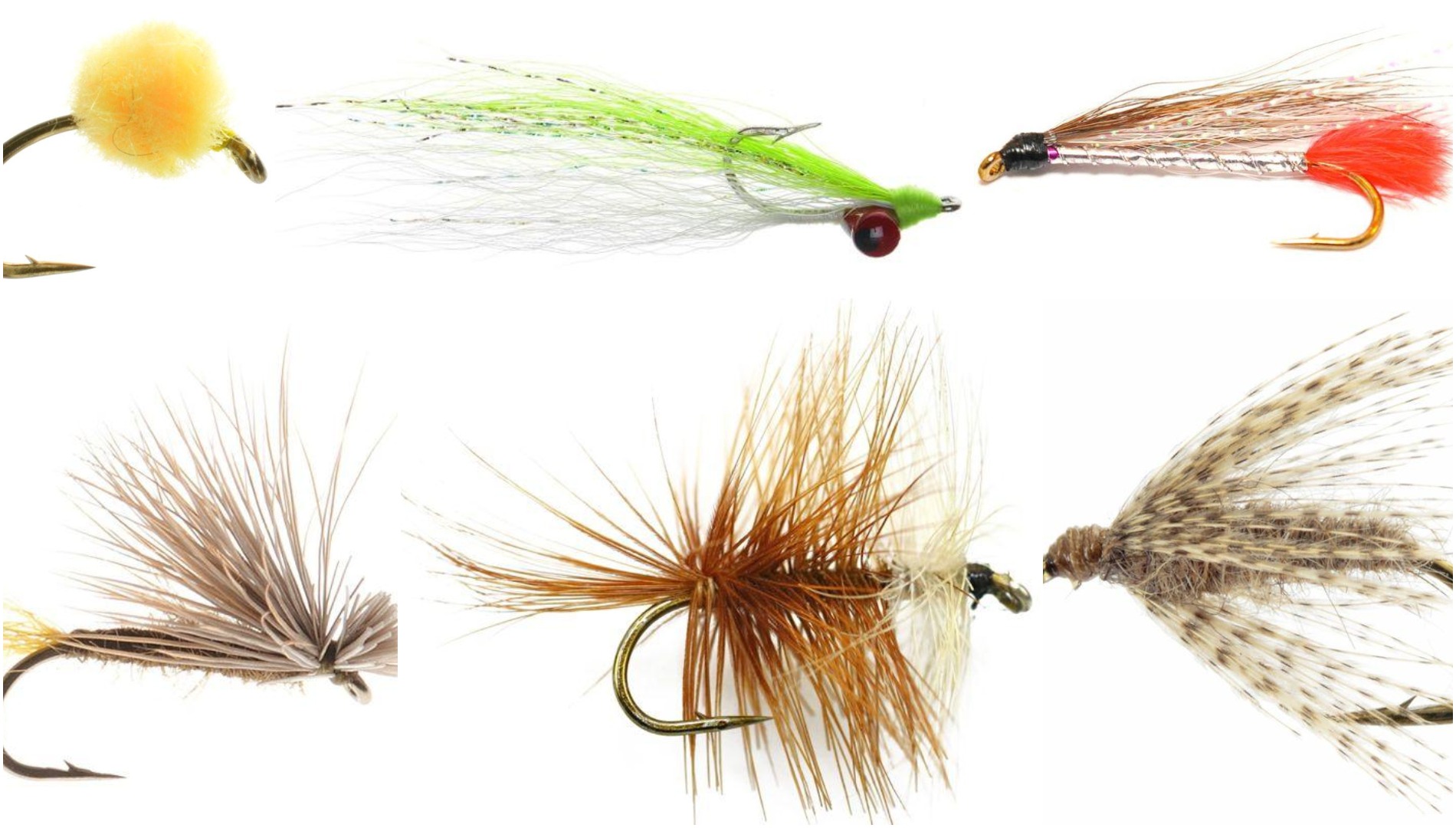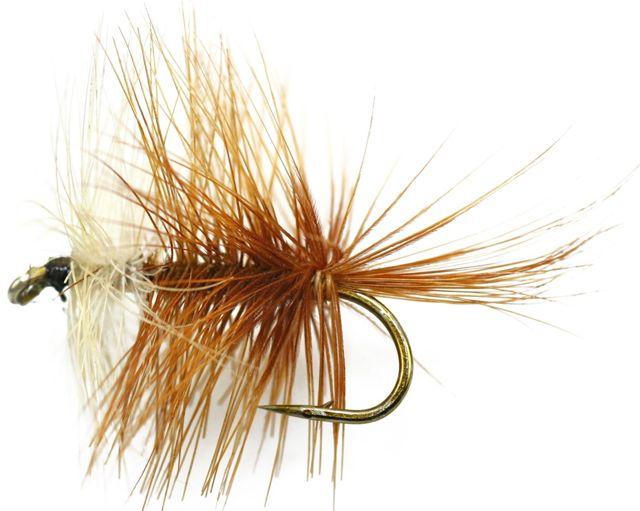ALL TIMERS
The simple, time-tested patterns will catch, trout, bass, pike, walleyes and more
Advertisement
BIVISIBLE
A hook, thread and two feathers—dry flies don’t get any simpler than that. This pattern is nearly 100 years old and, perhaps not surprisingly, it’s wildly out of fashion among anglers. But because it floats so well thanks to the palmered body hackle, it remains one of my favourite flies for swift- to medium-speed rivers. The secret to tying this fly (and most dry flies) is using the right kind of feather for the body. It’s crucial to select one with fibres that are stiff (rather than webby) and of a consistent length.
Advertisement
The Bivisible is one of my first choices when there’s no obvious insect activity, but I still want to try surface fishing. It’s intended as a mayfly imitation, though it lacks the prominent upright wings characteristic of classic mayfly patterns, such as the Adams. One theory is that the fly dimples the surface film in the same way as a long-tailed, six-legged mayfly does, making it attractive to a hungry trout or smallmouth. The name Bivisible reflects how the fly is visible to both the fish and the angler. The white front does indeed make it easier to see on the water, which is very helpful in detecting surface takes, which can be surprisingly gentle.
Hook: Standard dry fly, sizes 10 to 16
Tail: Brown hackle fibres
Body: Palmered brown hackle
Front: White hackle


